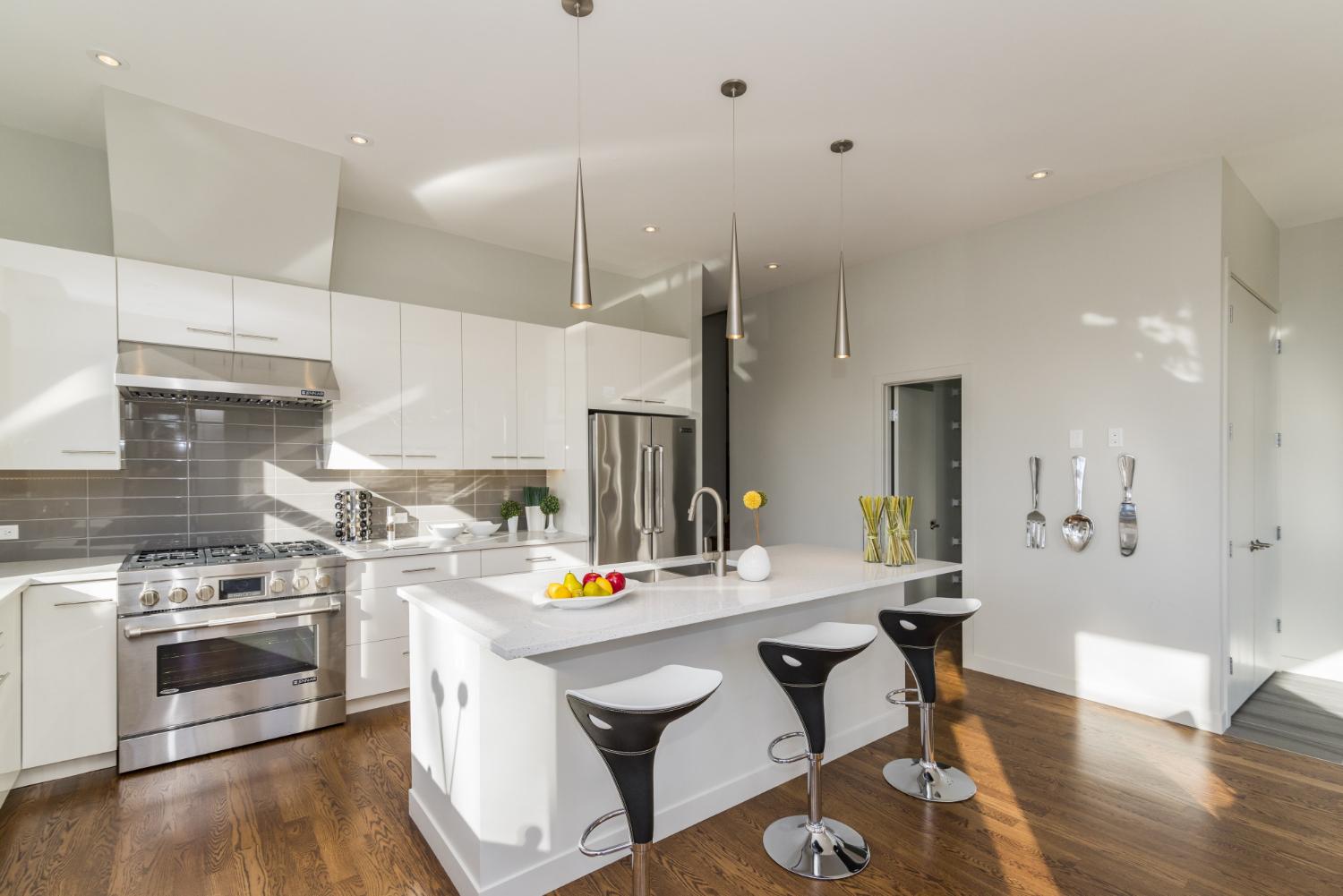The kitchen isn’t just a place to cook — it’s where a lot of everyday life unfolds. Morning coffee, late-night snacks, quick meals before heading out the door — it all happens here. That’s why a kitchen has to be more than just good-looking. It has to work. The animated kitchens are built around the way people live. They’re practical, comfortable, and built to last. Let’s break down what makes a kitchen truly great.
Thank you for reading this post, don't forget to subscribe!It Has to Work Well
You can have the nicest cabinets and the fanciest lighting, but if the layout doesn’t make sense, cooking becomes a chore. Good kitchens keep the flow simple. You should be able to get from the fridge to the stove to the sink without running laps. That’s why many kitchens stick with the “work triangle” idea — keeping those three key areas close together.
But layout is just part of the picture. Little things matter too. Can you reach your pots and pans easily? Are the knives in a drawer where you prep? A kitchen should save you time, not waste it.
Storage Is a Big Deal
There’s never “too much” storage in a kitchen — but there is such a thing as bad storage. Cabinets that are too deep to reach the back, shelves that don’t fit what you need, or drawers that jam easily — these things get annoying fast.
What helps? Deep drawers for pots and pans. Pull-out racks for spices and oils. A pantry you don’t dread opening. When things have a proper place, cooking feels smoother, and cleaning up takes less effort.
It Should Handle a Mess
Kitchens get messy. That’s part of the deal. But a good kitchen doesn’t make that harder. Materials like tile, sealed wood, and stainless steel can take a beating and still clean up easily. Counters shouldn’t stain the second you spill wine. Floors shouldn’t get ruined by a dropped pan.
You also want to think about airflow. Without good ventilation, grease sticks around, and smells linger. A strong fan or a hood that actually does its job makes a big difference, especially if you cook often.
Light Matters
Nobody wants to chop onions in the dark. Good lighting is often overlooked, but it’s one of the most important parts of a kitchen. You want bright light where you cook, softer light where you eat, and ideally, some natural light too. A window over the sink, for example, makes washing dishes less of a drag.
Make It Comfortable
A kitchen isn’t just for cooking. It’s where people hang out — whether they mean to or not. Someone’s always leaning on the counter, pouring a drink, sneaking a bite. That’s why comfort matters.
Wide walkways help. So does having a spot to sit — maybe a stool by the island or a small table by the window. If the space allows, adding a place where someone can relax while another person cooks makes the kitchen feel more welcoming. No one likes feeling like they’re in the way.
Also, the temperature matters more than people realize. A kitchen that overheats when the oven’s on becomes miserable. Ventilation, fans, or even a window that opens can help keep things comfortable.

It Should Feel Like You
Kitchens can be stylish, but more importantly, they should feel like home. Not every kitchen needs to look like a design magazine. What matters is that it fits your life and taste.
Maybe you like warm wood cabinets. Maybe you go for clean white tile. Maybe your fridge is covered in kids’ drawings, or maybe it’s sleek and empty. There’s no right answer — just what makes you feel good in your space.
Style isn’t just about looks, either. It’s about layout, the way tools are arranged, and the vibe the space gives off. The best kitchens feel personal without being overly precious. You should be able to spill a little flour without feeling like you wrecked the place.
It Should Adapt to Your Life
Good kitchens don’t just work well today — they stay useful over time. That means flexibility. Can you add more shelves later if you need them? Is there space for a bigger fridge down the line? Do the cabinets allow for a few layout tweaks?
Life changes. You might get into baking next year and suddenly need counter space for a mixer. Or maybe you’ll host more dinners and need room for serving dishes. A rigid kitchen locks you into the past. A smart one leaves room to grow.
Technology fits into this, too. Touchless faucets, built-in USB chargers, or smart appliances might sound fancy, but for some people, they’re daily tools. The key is to pick what fits your habits — not what’s trendy.
Clean-Up Shouldn’t Be a Battle
Let’s be honest: no one enjoys cleaning the kitchen. So the space shouldn’t make it harder than it has to be. The materials you choose — countertops, floors, wall coverings — should clean up easily. Matte surfaces show fewer smudges than glossy ones. Flush cabinet handles don’t collect as much grime.
Even layout plays a role. A sink near the stove means fewer drips on the floor. A dishwasher next to the silverware drawer makes unloading faster. These things sound small — and they are — but when you use a space every day, small stuff adds up.
Lighting (Yes, Again)
It’s worth repeating because people often get it wrong. Lighting can make a great kitchen feel cold, or make a small kitchen feel warm and inviting. If you can, mix it up. Use strong lights over workspaces and softer lights for eating areas. Under-cabinet lighting is a lifesaver when you’re chopping late at night.
Natural light is the gold standard. A window makes the whole room feel better — even if it’s just a small one over the sink. If there’s no natural light, go for warm, adjustable fixtures instead of harsh overhead beams.
The Intangible Stuff
There’s one last thing, and it’s not something you can measure: how the kitchen feels. Some kitchens just click. They feel lived-in, easy to use, and kind of comforting. You walk in and instantly feel at ease.
Usually, that comes from a mix of everything mentioned — layout, light, storage, and so on. But it also comes from use. A kitchen gets better the more it’s cooked in. Over time, it shapes itself to your routines. The drawer you hated might become your go-to spot. The corner you thought was wasted might turn into the perfect coffee nook.
The best kitchens aren’t perfect right away. They grow with you. They adapt. They feel like part of the home, not just a room inside it.
Final Thoughts
A great kitchen doesn’t need to be massive, expensive, or high-tech. It just needs to be well thought out. The qualities that matter most are the ones that make daily life easier: smart layout, solid storage, easy cleaning, and comfort.
Style and gadgets come later — or not at all. What matters is that your kitchen works for you. It should be a space you enjoy using, whether you’re throwing together breakfast or cooking a full meal. And if it feels like a place where people want to gather, talk, and relax — even better.
At the end of the day, the best kitchen is the one that earns its keep — not just with design, but with daily use.



